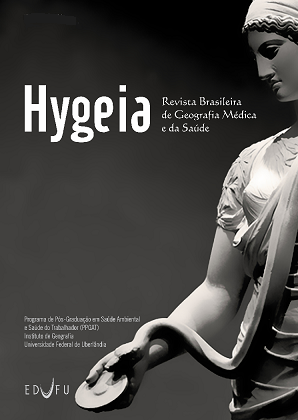EPIDEMIOLOGY OF AIDS IN A NORTHEASTERN BRAZILIAN STATE
DOI:
https://doi.org/10.14393/Hygeia1861580Palavras-chave:
HIV, Acquired Immunodeficiency Syndrome, Epidemiology, Spatial analysis, Ecological StudiesResumo
Objective: to identify high-risk clusters to AIDS and describe the epidemiologic profile of the disease in the municipalities of the State of Piauí, Brazil, from 2007 to 2015. Methods: This ecological study included 2.908 cases notified by the Brazilian System of Notifiable Diseases. Univariate and bivariate analyses were performed and the spatial scan statistic was used to evaluate the formation of purely AIDS clusters, with a significance of 5%. Results: Significant associations were observed between sexual orientation and sex and age (p<0.0001). The most probable cluster, with a relative risk (RR) of 5.05 (p <0.0001), covered six cities, including the capital of the state, Teresina. The BR-343 highway cuts through five cities in the Center-north mesoregion of state, with RRs to AIDS above the state average. Conclusions: Preventive intervention strategies are needed for young people, homosexual/bisexual men as well as in cities with high RR to AIDS that are transected by highways.








